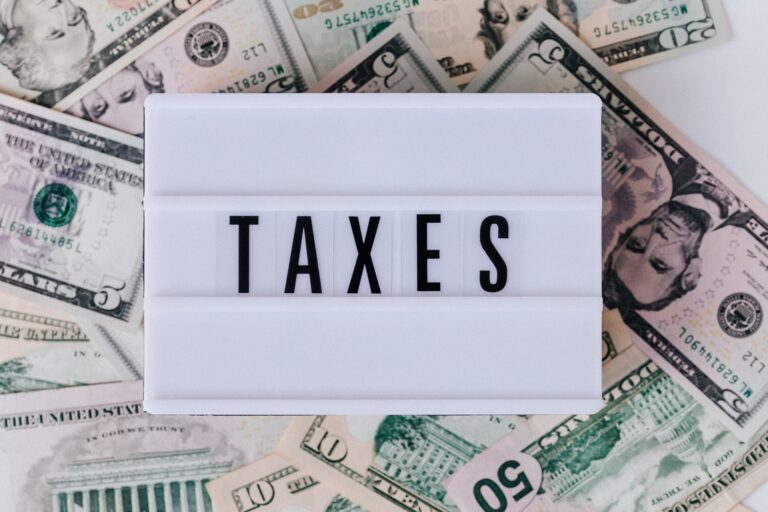Top 10 Strategies for Saving and Investing
*Photo by Alexander Grey on Unsplash
By Steve Poehler
Founded in 1887, the American Institute of Certified Public Accountants, or AICPA, has been around for, oh, just a couple of years. I also happen to be an AICPA member myself.
With that history in mind, I thought, what better time than now to perform a little “spring cleaning” of our finances and look at some strategies to help us save and invest our money wisely?
The Top 10 Strategies for Saving and Investing
Thanks to my partners at the AICPA, they recommend first coming up with a financial plan, complete with goals and action steps. As part of that process, try to incorporate some or all of the following 10 strategies.
1. START SMALL
Talk to any financial planner, and I’m sure all of them will recommend that you put money aside each month. Like many things, however, saving is easier said than done.
So start small.
The AICPA recommends setting aside 10 percent of your monthly income. To me, that seems high and is likely not doable for many people, particularly when first beginning to save. However, everyone should be able to save 1 percent, or perhaps up to 5 percent, of their income.
Figure out what you can afford by creating a budget. Then whatever amount you can save—be consistent, and stick with it.
2. UNDERSTAND COMPOUND INTEREST
Simply stated, compound interest equals the interest paid on the principal and the additional accumulated interest.
By saving or investing in accounts and funds that pay you interest, you can, over time, double your investment.
For example, if you set aside $1,000 into a 4 percent, interest-bearing account, you can double your money to $2,000 in roughly 18 years (take 72, divided by the interest rate of 4).
While this might sound like a long time, the beauty is, that your money is working for you! That’s the beauty of interest.
3. CONTRIBUTE TO A RETIREMENT PLAN
If your employer offers a 401(k) plan, contribute to the plan at least as much as your company matches.
Most of the time, you can contribute to these plans before taxes, and the IRS even allows a “Saver’s Credit” for those who are eligible. Combine these two facts, and you save on your tax bill by simply putting aside money for retirement.
Ideally, saving 10 percent of your income or more into a retirement plan is best. At a minimum, though, take advantage of any “free money” offered by your employer in the form of a match.
If your company does not offer a 401(k) or other retirement plan, you can open an individual retirement account (IRA).
4. SAVE THROUGH PAYROLL DEDUCTIONS
A great way to save is to put your money into a separate savings account.
You can even set up a direct deposit through your employer, where a certain amount each paycheck gets deposited directly into your savings account first—and then the rest is deposited to your main checking account.
I quote the AICPA: “Remember, what you don’t see, you can’t spend!”
5. ROUND UP YOUR PAYMENTS
You can pay off your credit card and mortgage (if you own a home) more quickly if you “round up” your monthly payments to, say, the nearest hundred, or by sending in an extra or 0 each month.
For mortgages, typically your lender will apply the extra payments directly to the principal balance. Also, you usually don’t need to contact your lender or commit to a specific amount—you just make the extra payments as you are able.
All of this will save you on interest for these loans.
6. BANK YOUR RAISES
If and when you are fortunate to get a raise at work, try living on your previous salary. Then deposit the additional earnings into a savings or investment account.
You can follow this same method when receiving your income tax refund or any other unexpected “windfalls.”
Of course, we are human, so anytime we make more money, we want to immediately spend it. It takes discipline not to spend, but by saving more “you’ll be surprised how quickly your balance grows,” according to the AICPA.
7. KEEP PAYING OFF A LOAN
When you finish paying off a car or other personal loan, such as a credit card, why not continue making the same monthly payments—but to yourself instead?
Put the money into a savings or investment account, and then perhaps when the time comes to buy another car or similar purchase, you may find that you have enough to pay for the item in cash. At a minimum, you should have enough funds available to make a sizable down payment.
8. PAY OFF YOUR CREDIT CARDS
This should probably be No. 1 on the list. I’ll keep saying it—there is nothing worse than credit card debt!
If possible, consolidate all of your credit card debt onto one card, with the lowest interest rate. Then start paying as much as you can each month to get rid of the balances.
If your credit card balances as so high that it might be nearly impossible to ever pay them off, you should also consider a debt consolidation service, such as GreenPath Financial Wellness.
Remember, too, that unless you can find a “0 percent interest rate” offer, credit cards historically carry high-interest rates on outstanding purchase balances, which can run upwards of 18 percent in some cases.
9. REINVEST DIVIDENDS
If you own a brokerage or other investment account, and you receive dividends from stocks and mutual funds, a good savings plan is to reinvest the dividends, instead of taking them in the form of cash.
By reinvesting, you purchase additional shares of stock or mutual funds, which allow your investments to grow more quickly while keeping you from spending the cash dividends.
10. KEEP TRACK OF WHERE YOUR MONEY GOES
Like credit cards, this one should also be much higher up on this list.
Understanding where you spend your money is key to figuring out how and where you can cut back on expenses—and how much you can save. Make a list of all of your income and expenditures, and add them up to see if your income exceeds your expenses (which is the goal!), or vice versa.
With online banking readily available these days, you can easily check your spending history. Another option is to carry a small notebook with you and manually keep track of every dollar you spend for a few months.
CONCLUSION
By following some of these strategies, hopefully, you will save more. It usually takes some time, though, so be patient with yourself, and know that it is worth having money set aside.
Not only does saving help reduce the stress that comes with money, but you will be more in control of your finances.
As they say, Rome wasn’t built in a day—and neither will your savings account.
Steve Poehler is a father, a husband, and a huge sports fan. A former sports writer, Steve is now a CPA who spent five years working at a public accounting firm before becoming a Senior Financial Analyst for a nonprofit organization, the Catholic Archdiocese of Portland. Steve loves to work out, be outdoors, and follow sports, including his beloved Denver Broncos. Steve lives in Portland, Oregon, with his family.







